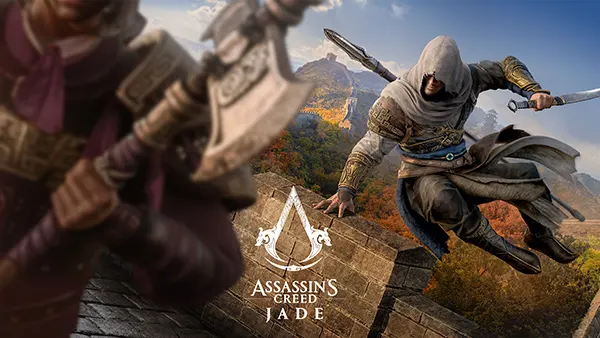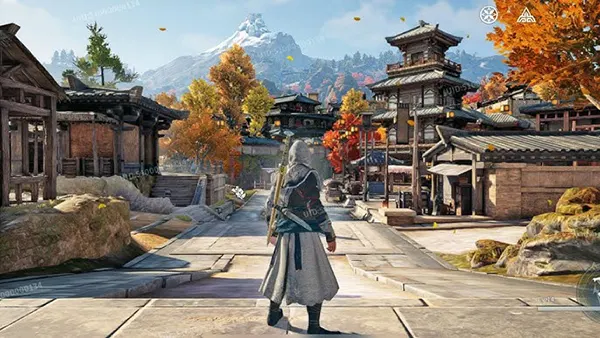Assassin’s Creed Jade: The First True Mobile RPG in the Legendary Series

Ubisoft’s announcement of Assassin’s Creed Jade marked a turning point for fans of the iconic franchise, especially those who prefer gaming on mobile devices. For the first time in the series’ long and storied history, players can enjoy a fully-fledged role-playing experience on Android. Set in ancient China, this new title offers rich storytelling, expansive world exploration, and deep character customisation—key components that define the RPG genre.
The Setting and Storyline of Assassin’s Creed Jade
Assassin’s Creed Jade is set during the Qin dynasty, a period known for unification, philosophical reform, and military conquest. This historical backdrop is rich with political intrigue and social transformation, making it a fitting canvas for the series’ trademark mix of stealth, action, and historical fiction. The protagonist, whose identity can be customised by the player, is drawn into a larger conspiracy involving the Assassin Brotherhood and emerging imperial powers.
The narrative spans major cities, rural settlements, and significant historical landmarks across China. Ubisoft has worked closely with historians and cultural consultants to ensure the portrayal of the setting is not only visually stunning but also contextually accurate. Players can expect dynamic missions influenced by real events and figures from the time, enhancing immersion.
One standout feature of the storyline is the opportunity to encounter figures such as Emperor Qin Shi Huang and his military advisors, blending real history with fictional storytelling. The missions are layered and interconnected, allowing the player’s choices to have genuine consequences within the game world.
RPG Features Tailored for Mobile Gameplay
Assassin’s Creed Jade introduces an expansive skill tree system designed specifically for touch-based interfaces. The progression allows players to tailor their character toward different combat and stealth styles, offering strategic depth uncommon in most mobile titles. Weapon upgrades, armour crafting, and character buffs are integrated seamlessly through an intuitive menu system.
Players can select from multiple dialogue options that affect relationships with key characters. This approach borrows from traditional console RPGs but is adapted for shorter mobile sessions. The inclusion of decision-making mechanics brings a layer of narrative complexity often lacking in mobile gaming experiences.
Combat in Jade is responsive and fluid, leveraging virtual joystick controls and gesture-based attacks. Unlike typical action games on Android, Jade includes the ability to parry, counter, and chain attacks—elements that demand player skill and timing rather than mere screen tapping.
Technical Advancements and Visual Fidelity
Jade runs on a proprietary engine optimised for mobile hardware, ensuring high-quality graphics without compromising performance. Dynamic lighting, weather effects, and realistic terrain mapping make it one of the most visually impressive Android games to date. The game supports high refresh rates and adaptive resolution scaling for flagship devices, while still remaining playable on mid-tier phones.
Ubisoft has implemented real-time shadows, advanced water physics, and volumetric fog to elevate the environmental detail. Animations are captured through motion tracking, bringing a fluidity to character movement rarely seen in mobile titles. These technical elements help immerse players in the richly detailed open world.
To complement the visuals, the developers have included an original soundtrack that blends traditional Chinese instrumentation with the franchise’s iconic musical motifs. Voice acting is available in multiple languages, including English and Mandarin, reflecting the game’s international focus and commitment to authenticity.
Control Scheme and UI Design
The user interface is minimalistic and adaptive. Icons are smartly positioned to avoid clutter, with core actions accessible through intuitive gestures. Players can customise their HUD, including minimap orientation, transparency levels, and button layouts to suit their preferences or device size.
Touchscreen responsiveness has been a focus in development. The parkour system, a cornerstone of the Assassin’s Creed series, functions with precision through swipe and tap mechanics. Climbing, leaping, and navigating narrow ledges feel natural, even on small screens.
For players using controllers or gaming accessories, the game includes built-in support for Bluetooth devices. Button mapping can be personalised, making the game accessible to a wide range of playstyles and physical abilities.

Monetisation, Release Model and Community Integration
Assassin’s Creed Jade follows a free-to-play model with optional in-game purchases. Unlike many mobile titles, it avoids pay-to-win mechanics. Purchasable items include cosmetic skins, time-saving consumables, and story expansions, all of which are non-essential for completing the main campaign. This model supports ongoing updates while respecting player investment and effort.
Ubisoft plans seasonal updates and timed events that add new storylines, gear, and missions. Players can engage in community challenges that unlock shared rewards, fostering a sense of shared progress among the fanbase. Social features include guilds, PvP duels, and a replay system for mission leaderboards.
Progress is synced via Ubisoft Connect, allowing players to back up data and switch devices without losing advancement. The game has also launched a beta feedback programme, encouraging early adopters to suggest changes and report bugs directly to the developers, reinforcing the studio’s commitment to transparency and improvement.
Position in the Franchise and Player Reception
Assassin’s Creed Jade is not a side project or spin-off; it is treated as a core entry in the franchise. Its events tie into the larger Assassin’s Creed lore, including connections to known characters and factions. This reinforces its canonical relevance and importance within the series timeline.
Initial feedback from beta testers has been largely positive, particularly regarding the game’s scope and production values. Players commend the freedom of movement, detailed environments, and depth of RPG mechanics. Criticism mainly revolves around the need for improved battery optimisation, which the developers have acknowledged.
With its ambitious design and attention to detail, Jade sets a new benchmark for what mobile games can achieve. It showcases how long-form narrative and strategic gameplay are possible even on small screens—without sacrificing quality, authenticity, or the series’ heritage.
